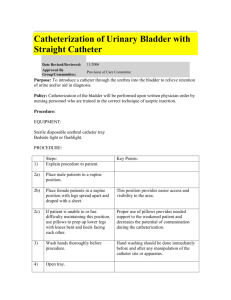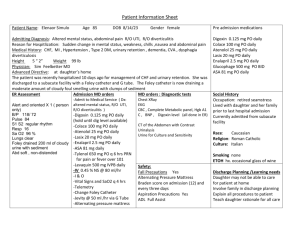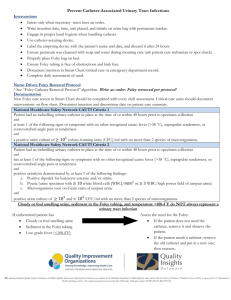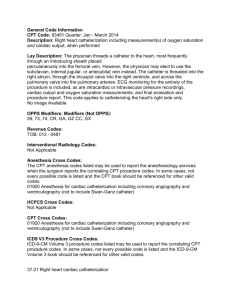Infant and Child Cath Insert ()
advertisement
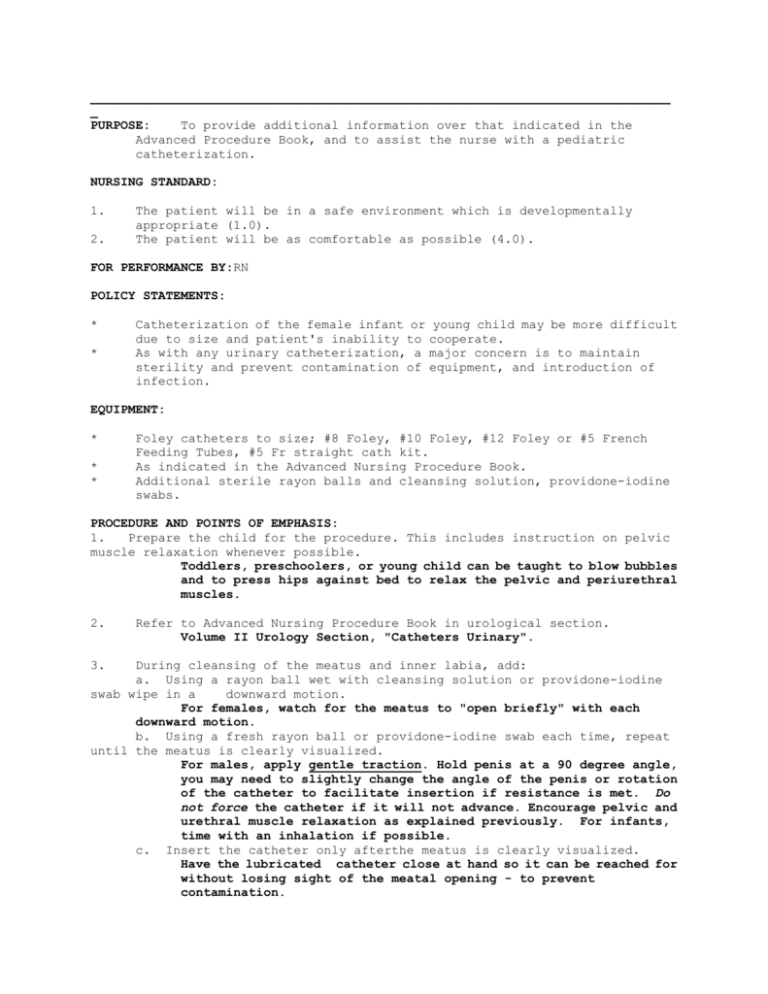
_____________________________________________________________________________ _ PURPOSE: To provide additional information over that indicated in the Advanced Procedure Book, and to assist the nurse with a pediatric catheterization. NURSING STANDARD: 1. 2. The patient will be in a safe environment which is developmentally appropriate (1.0). The patient will be as comfortable as possible (4.0). FOR PERFORMANCE BY:RN POLICY STATEMENTS: * * Catheterization of the female infant or young child may be more difficult due to size and patient's inability to cooperate. As with any urinary catheterization, a major concern is to maintain sterility and prevent contamination of equipment, and introduction of infection. EQUIPMENT: * * * Foley catheters to size; #8 Foley, #10 Foley, #12 Foley or #5 French Feeding Tubes, #5 Fr straight cath kit. As indicated in the Advanced Nursing Procedure Book. Additional sterile rayon balls and cleansing solution, providone-iodine swabs. PROCEDURE AND POINTS OF EMPHASIS: 1. Prepare the child for the procedure. This includes instruction on pelvic muscle relaxation whenever possible. Toddlers, preschoolers, or young child can be taught to blow bubbles and to press hips against bed to relax the pelvic and periurethral muscles. 2. 3. Refer to Advanced Nursing Procedure Book in urological section. Volume II Urology Section, "Catheters Urinary". During cleansing of the meatus and inner labia, add: a. Using a rayon ball wet with cleansing solution or providone-iodine swab wipe in a downward motion. For females, watch for the meatus to "open briefly" with each downward motion. b. Using a fresh rayon ball or providone-iodine swab each time, repeat until the meatus is clearly visualized. For males, apply gentle traction. Hold penis at a 90 degree angle, you may need to slightly change the angle of the penis or rotation of the catheter to facilitate insertion if resistance is met. Do not force the catheter if it will not advance. Encourage pelvic and urethral muscle relaxation as explained previously. For infants, time with an inhalation if possible. c. Insert the catheter only afterthe meatus is clearly visualized. Have the lubricated catheter close at hand so it can be reached for without losing sight of the meatal opening - to prevent contamination. d. Reference: Remove straight catheter slowly and smoothly, pinching lumen. Perry & Potter, "Clinical Nursing Skills & Techniques", Fifth Edition, 2004 Page 706-714. Wong's "Nursing care of Infants and Children" 7th Edition 2003 pgs 1144-1146.
